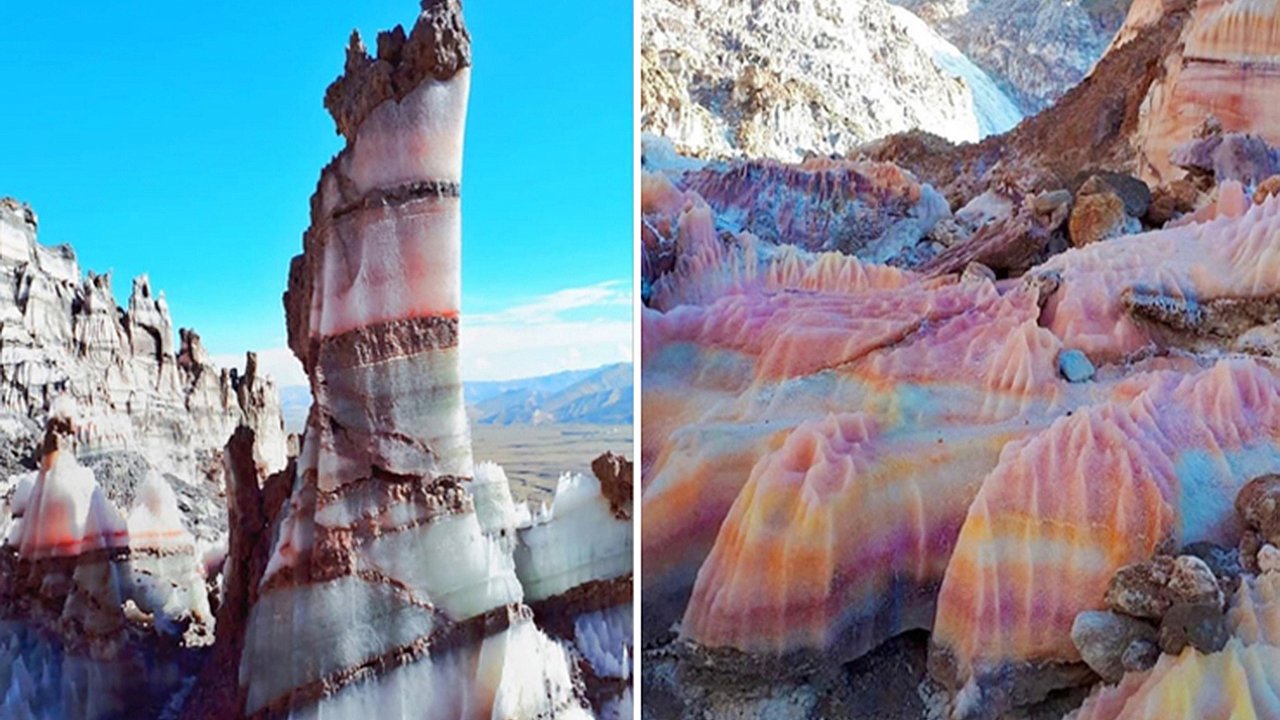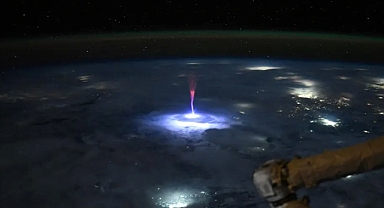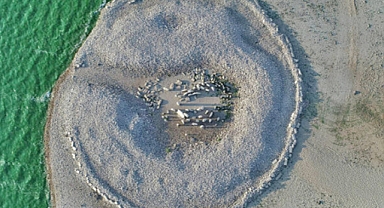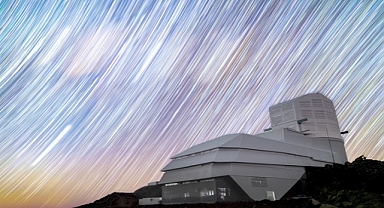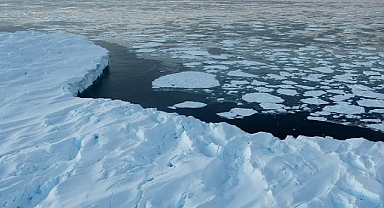The Birth of Iran’s Salt Formations
Millions of years ago, the Persian Gulf extended far beyond its present boundaries, submerging much of Iran and the Arabian Peninsula. As seawater gradually evaporated, it left behind thick layers of salt. Over time, these deposits became buried under sediments washed down from surrounding mountains. The weight of these accumulated layers compressed the salt below, forcing it to behave like a slow-moving fluid—a phenomenon known as salt tectonics.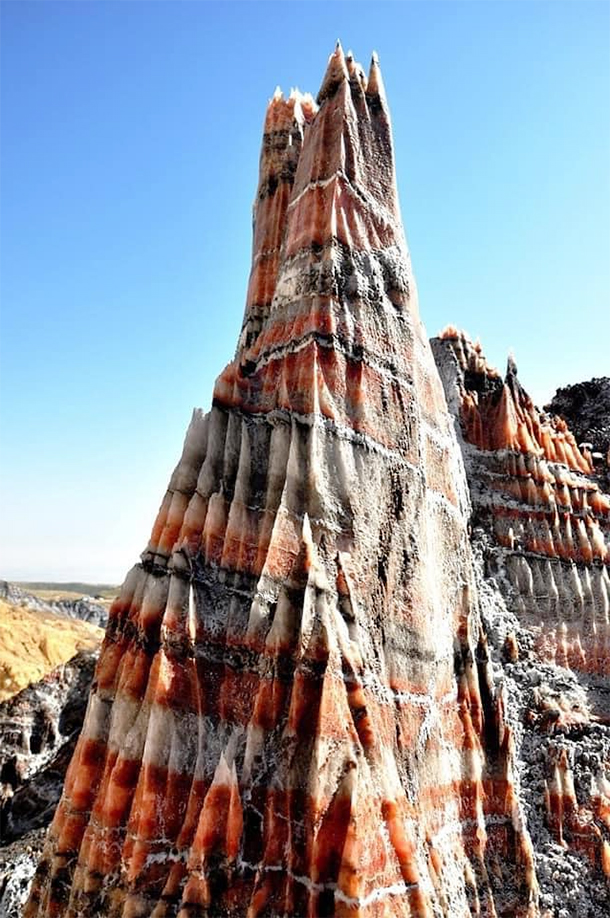
This process led to the creation of salt diapirs, which are underground salt formations that rise toward the surface when encountering weak points in the overlying rock layers. When these diapirs breach the surface, they expand outward, forming striking salt glaciers. The result is an ever-changing landscape of crystalline formations, salt valleys, and intricate cave systems that appear almost otherworldly.The Spectacular Salt Landscapes of the Zagros Mountains
The Zagros Mountains, stretching parallel to Iran’s southern coastline, are home to the most extraordinary salt formations in the world. According to UNESCO, the region contains a higher concentration of salt domes than any other place on Earth, making it a one-of-a-kind geological treasure. Some of the most notable formations include:
Despite their natural beauty, Iran’s salt formations face potential threats from oil exploration. Salt domes are known to trap petroleum beneath rock layers, making them prime targets for drilling. Other regions around the world, including the United States, Mexico, and Germany, have already exploited salt domes for oil production. If similar practices expand in Iran, these fragile and unique formations could be at risk.
Efforts are underway to protect Iran’s salt landscapes. Although they are not yet listed as UNESCO World Heritage Sites, they are being considered for inclusion. Preserving these formations is essential to maintaining their geological significance and ensuring that future generations can continue to marvel at their natural splendor.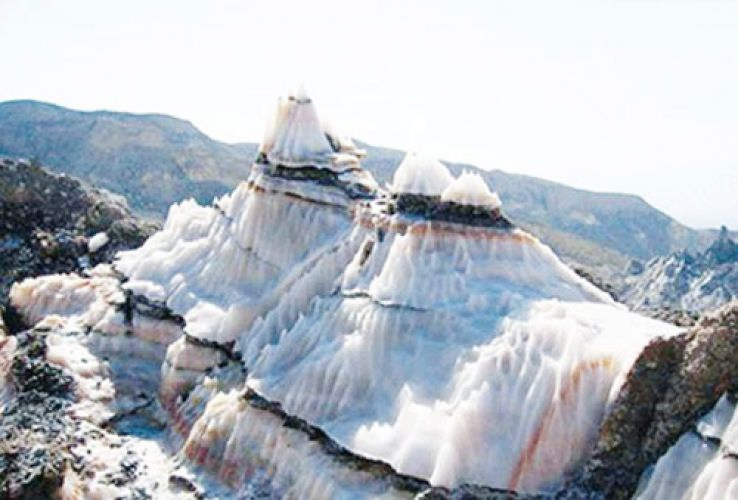 Iran’s salt formations stand as one of the most mesmerizing geological wonders of the natural world. The combination of salt domes, caves, glaciers, and valleys showcases the breathtaking artistry of nature. Whether for scientific study, tourism, or simply appreciating the power of natural forces, the Salt Formations of Iran deserve global recognition and protection.
Iran’s salt formations stand as one of the most mesmerizing geological wonders of the natural world. The combination of salt domes, caves, glaciers, and valleys showcases the breathtaking artistry of nature. Whether for scientific study, tourism, or simply appreciating the power of natural forces, the Salt Formations of Iran deserve global recognition and protection.
Millions of years ago, the Persian Gulf extended far beyond its present boundaries, submerging much of Iran and the Arabian Peninsula. As seawater gradually evaporated, it left behind thick layers of salt. Over time, these deposits became buried under sediments washed down from surrounding mountains. The weight of these accumulated layers compressed the salt below, forcing it to behave like a slow-moving fluid—a phenomenon known as salt tectonics.

This process led to the creation of salt diapirs, which are underground salt formations that rise toward the surface when encountering weak points in the overlying rock layers. When these diapirs breach the surface, they expand outward, forming striking salt glaciers. The result is an ever-changing landscape of crystalline formations, salt valleys, and intricate cave systems that appear almost otherworldly.The Spectacular Salt Landscapes of the Zagros Mountains
The Zagros Mountains, stretching parallel to Iran’s southern coastline, are home to the most extraordinary salt formations in the world. According to UNESCO, the region contains a higher concentration of salt domes than any other place on Earth, making it a one-of-a-kind geological treasure. Some of the most notable formations include:
- Salt Domes: More than 130 salt domes have been identified in the southern Zagros Mountains alone. These domes have played a crucial role in shaping the region’s unique folded landscape.
- Salt Glaciers: The largest salt glacier in the area spans approximately 14 kilometers, forming a rare and mesmerizing sight.
- Salt Caves: Iran is home to the world’s longest salt cave, the Namakdan Cave, stretching over 6.4 kilometers.
- Salt Valleys & Karst Sinkholes: These natural features further enrich the diversity of the region’s salt formations, adding to its geological intrigue.
Despite their natural beauty, Iran’s salt formations face potential threats from oil exploration. Salt domes are known to trap petroleum beneath rock layers, making them prime targets for drilling. Other regions around the world, including the United States, Mexico, and Germany, have already exploited salt domes for oil production. If similar practices expand in Iran, these fragile and unique formations could be at risk.
Efforts are underway to protect Iran’s salt landscapes. Although they are not yet listed as UNESCO World Heritage Sites, they are being considered for inclusion. Preserving these formations is essential to maintaining their geological significance and ensuring that future generations can continue to marvel at their natural splendor.
 Iran’s salt formations stand as one of the most mesmerizing geological wonders of the natural world. The combination of salt domes, caves, glaciers, and valleys showcases the breathtaking artistry of nature. Whether for scientific study, tourism, or simply appreciating the power of natural forces, the Salt Formations of Iran deserve global recognition and protection.
Iran’s salt formations stand as one of the most mesmerizing geological wonders of the natural world. The combination of salt domes, caves, glaciers, and valleys showcases the breathtaking artistry of nature. Whether for scientific study, tourism, or simply appreciating the power of natural forces, the Salt Formations of Iran deserve global recognition and protection.